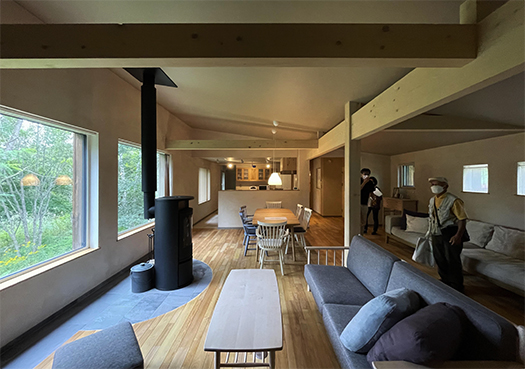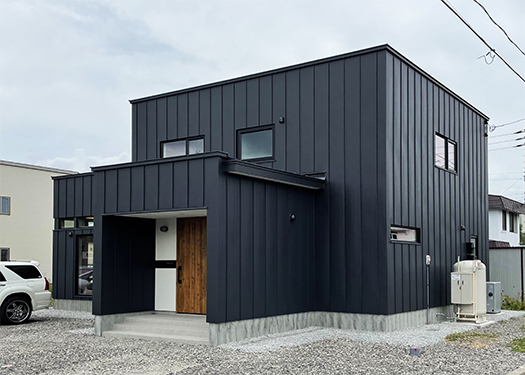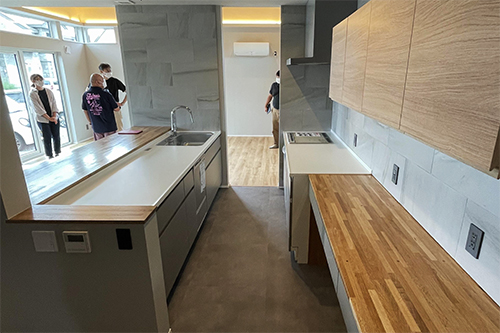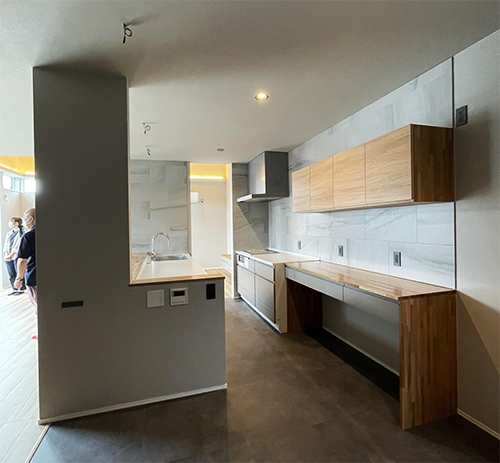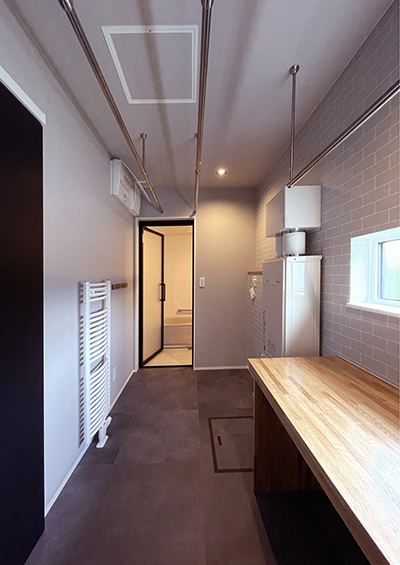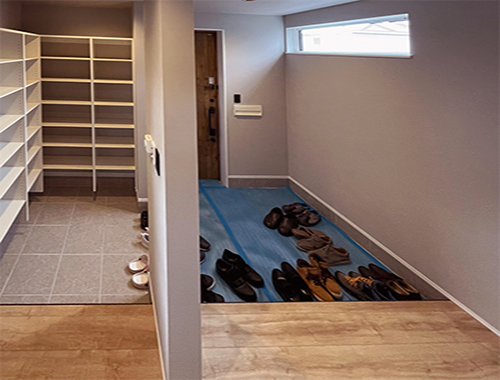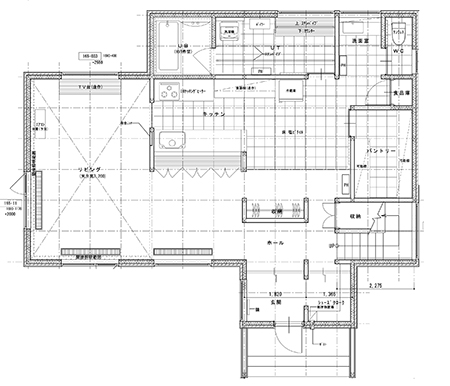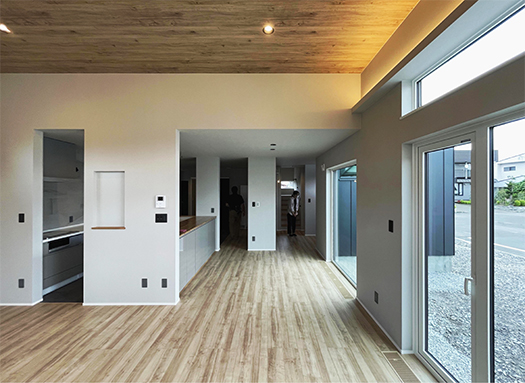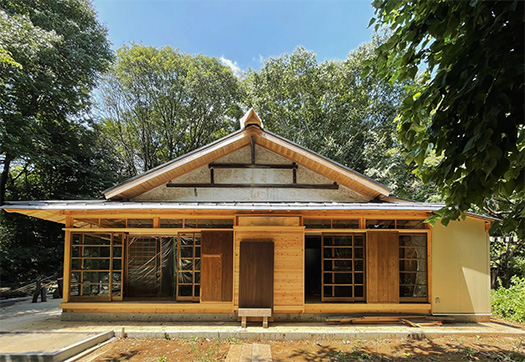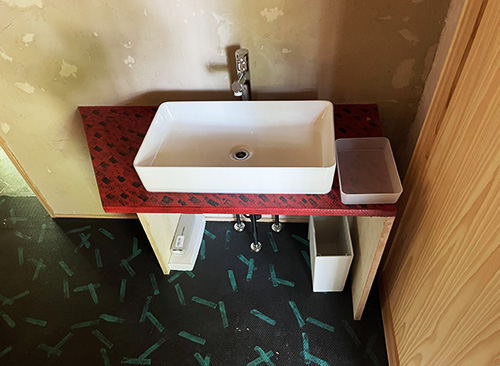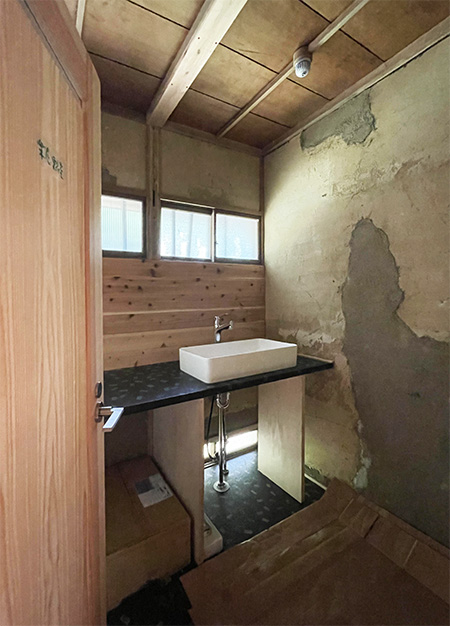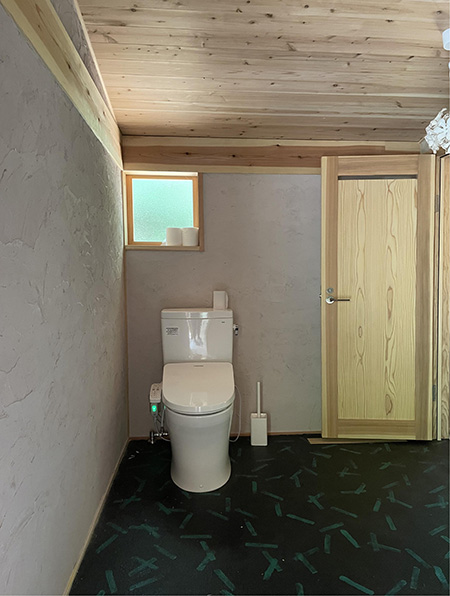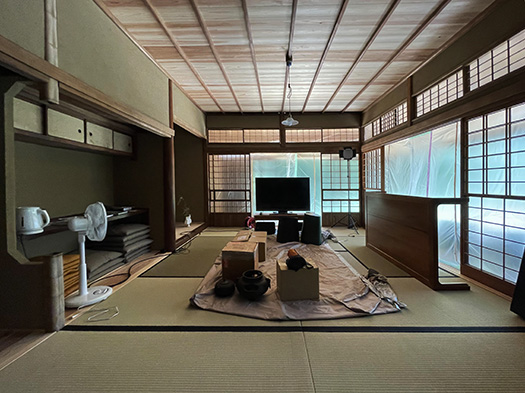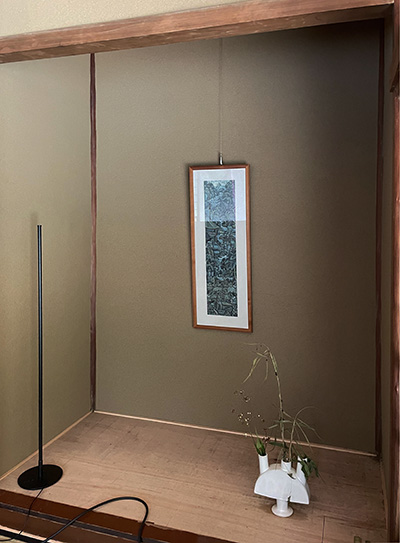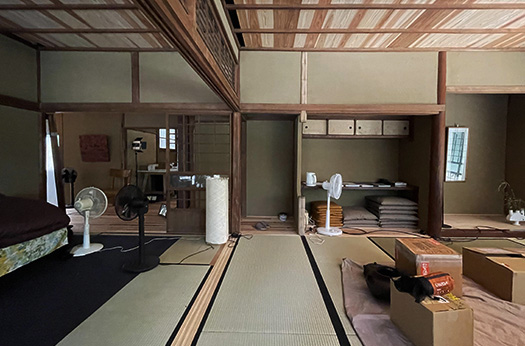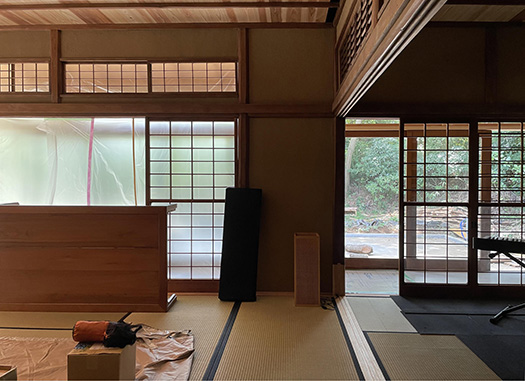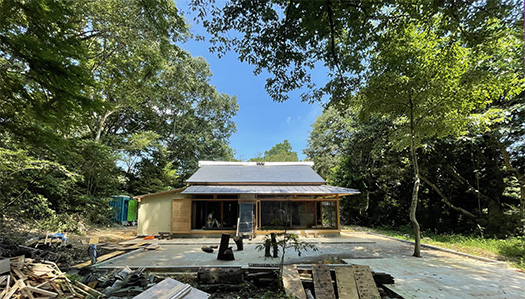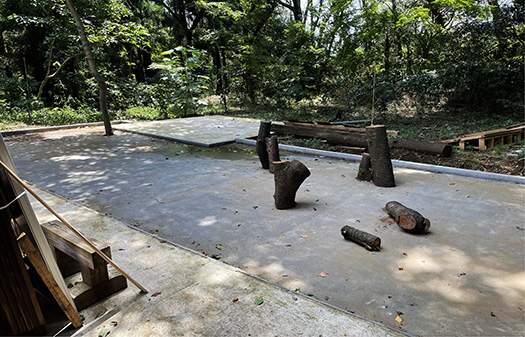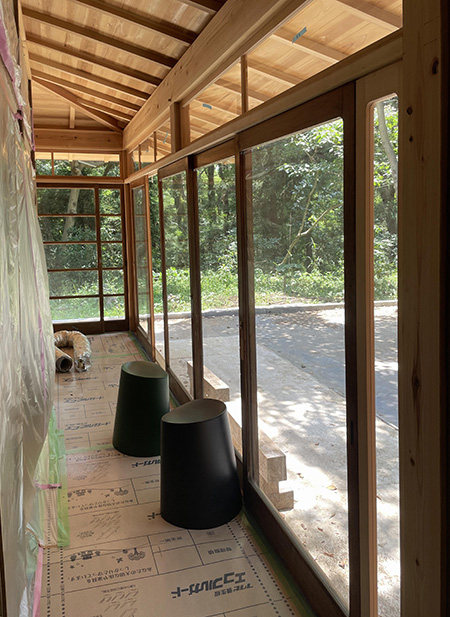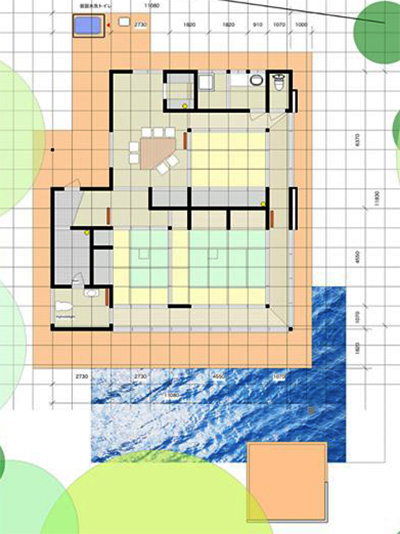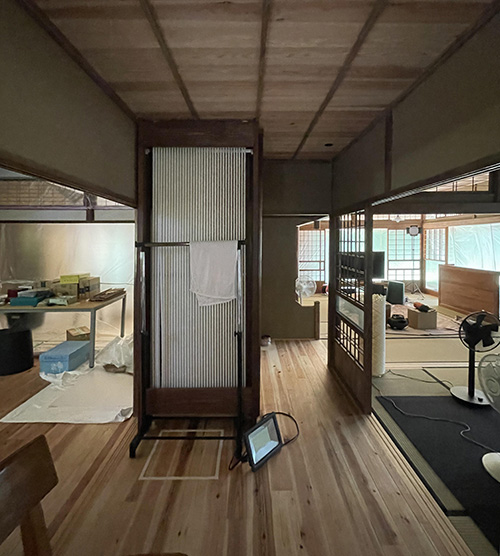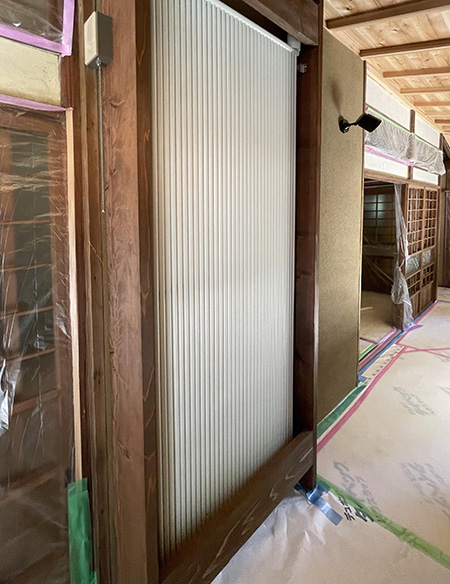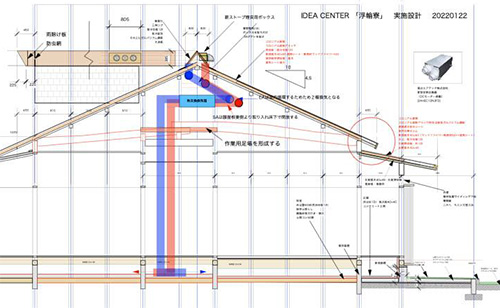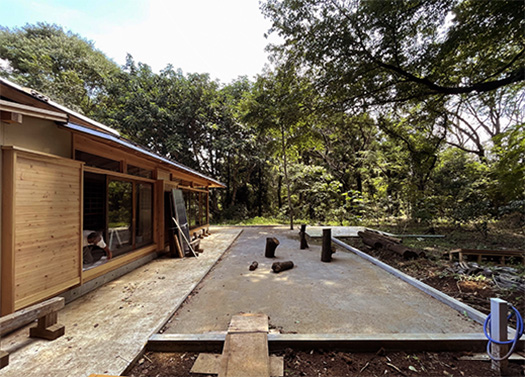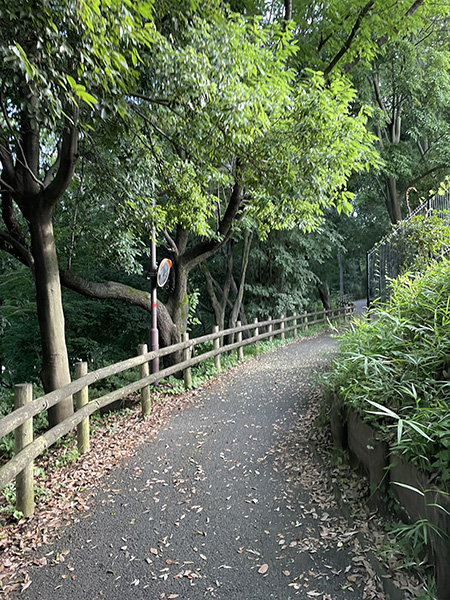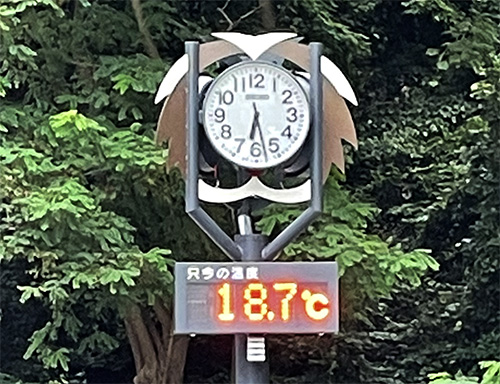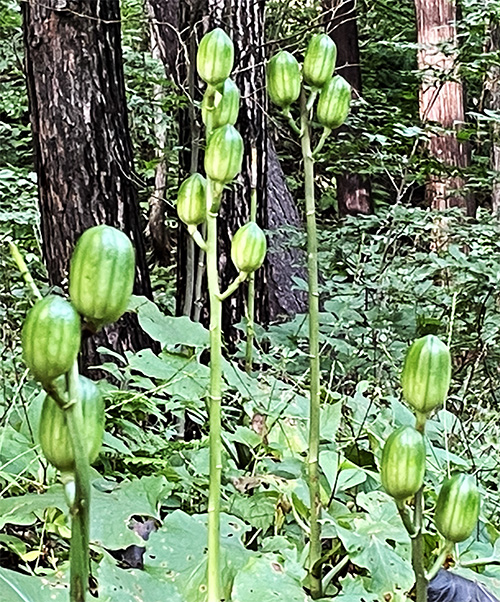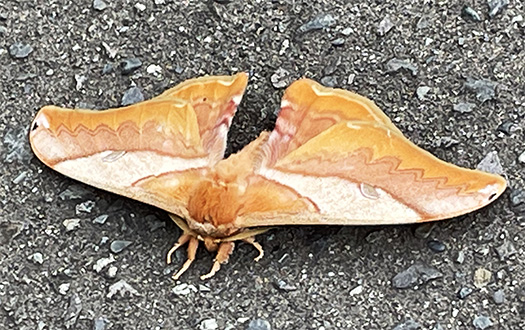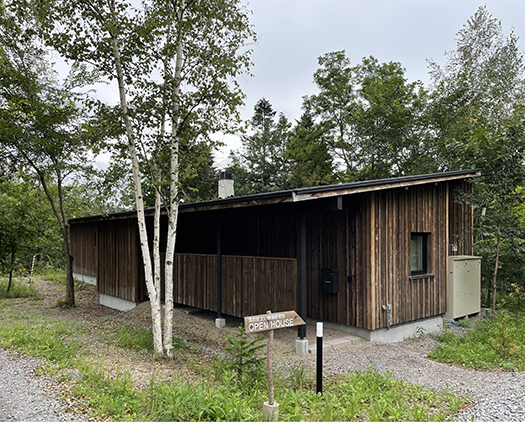
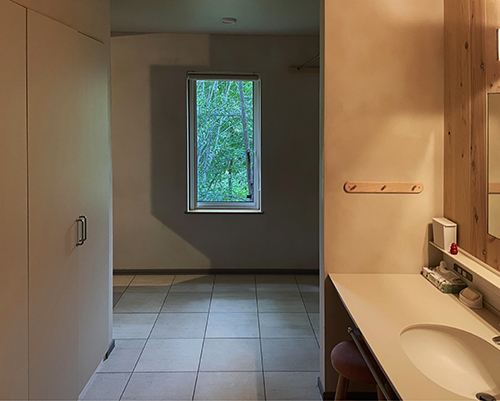

アース21旭川例会住宅見学、2軒目は北の住まい設計社さん。
こちらは家具のブランドメーカーで全国に幅広く展開しています。
その流れで家づくりにも参入したという変わり種企業。
ただ、社名からは家具作りを通じて家の空間すべてに関わる志向性は感じる。
わたし自身は家具メーカーとしての取材経験もあり、
その後住宅を手掛けられ、またさらに最先端の家づくり研鑽グループ
アース21にも参加したということで、強い意気込みを感じていた。
家具作り同様、細部までしっかりしたディテールを追求されて
「長く使える空間」を志向されている様子は伝わってくる。
家具に使う材への吟味は建築へのそれと比べて、より深くなる。
素材へのこだわりを語られるときの情熱には動かされるモノがあった。
たぶんそのあたりでの心理は表現を超える部分もあると思います。
そういうことなので、建築の空間づくりに於いても目指す「佇まい」が
より濃密で、深くなっていると思えます。
なんというか、空間の手づくり感が伝わってくる。
そういった空間の密度の深さみたいな部分を今回外部アプローチで感じた。
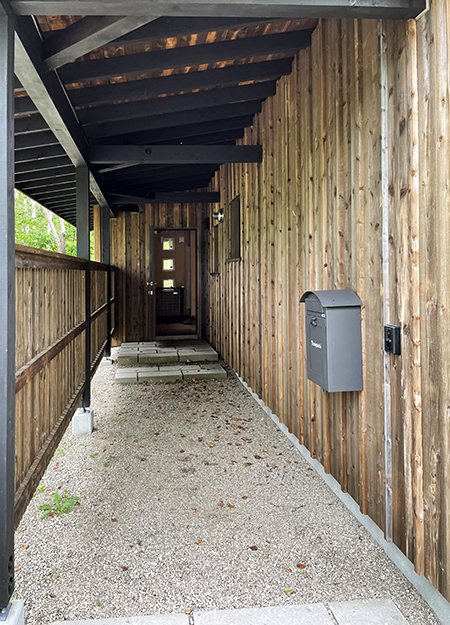
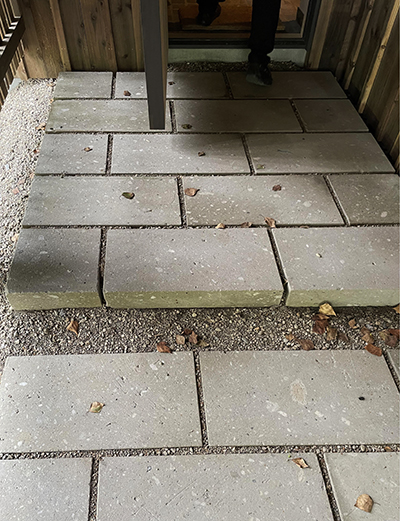
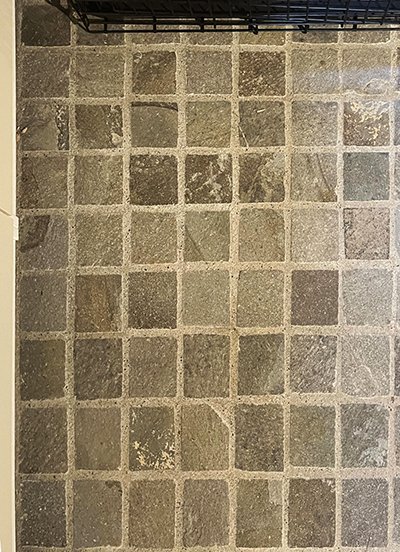
自然の豊かな環境そのまま、周囲には樹木があるけれど、
そこから家にたどりつくエントランスには砂利〜札幌軟石敷き込み。
ふと気になって砂利の深さを尋ねたら20cmなのだという。
そしてその上に重ねられた札幌軟石はぴったりと整合している。
この家は建てて数年経過、幾つかの冬を超えている。
まるでモルタルででも下部が固められているように思えた。
しかし、天圧を掛けた砂利20cmの上に「置いている」だけだという。
ご存知のように北海道は「凍結深度」という概念があって、
家の基礎は深く掘り下げることが義務づけられている。
冬期間の寒冷で表面土壌中の水分が凍結し地面が凸凹になるので、
その対応策として家の基礎については深く掘り下げるのが基準になっている。
ちなみに東川では80cmと定められている。
その上に建つ住宅への被害を防止する工法基準。
ただ、それ以外の外周部には当然、基準があるワケではないが、
この外部アプローチでは20cm掘り下げでこの写真のようにしっかり固定されている。
そして最後の写真はその札幌軟石から玄関に入っての床のタイルの様子。
ずっと「足下ばかり見て」きたけれど、その素材選択の感覚に
なにか強く惹かれていたのであります。
石のデザイン、っていうようなハーモニーを感じていた。
English version⬇
Fusion of Furniture and House Building Asahikawa 2022 House Building Exploration-4
Furniture making and house building, and the dense relationship between them and human beings. The attitude of craftsmanship felt in the exterior approach molding. The exterior approach molding.
The second house of the Earth 21 Asahikawa meeting house tour was by Kita no Sumai Sekkeisha.
This company is a furniture brand manufacturer with a wide range of operations throughout Japan.
This is an unusual company that has entered the home building business as part of the same trend.
However, from the company name, I sense that they are oriented toward all aspects of home space through furniture making.
I myself have experience in reporting on furniture manufacturers.
I have also worked as a furniture maker, and later on as a house builder.
I was also impressed by his strong enthusiasm for the project, as he has participated in Earth 21, a cutting-edge house building study group.
As with furniture making, he pursues the details of the house with a strong sense of detail.
The client’s desire to create a “space that can be used for a long time” is evident in their work.
The materials used for furniture are more carefully examined than those used for architecture.
I was moved by his passion when he talked about his commitment to materials.
Perhaps there is more to the psychology in this area than expression.
That is why the “appearance” that we aim for in architectural space creation is becoming more dense and deep.
I think that the “appearance” that we aim for in architectural space creation is becoming more dense and deep.
I can feel the handmade feeling of the space.
I felt that kind of depth of spatial density in the external approach this time.
The house is located in a rich natural environment with trees around the house.
The entrance to the house is covered with gravel and Sapporo soft stone.
I was curious about the depth of the gravel, and was told that it was 20 cm.
The gravel was 20 cm deep, and the piled stones were perfectly matched to the gravel.
The house has been built for several years and has been through several winters.
It seemed as if the lower part of the house had been hardened with mortar.
However, the house was only “placed” on 20 cm of gravel with top pressure applied.
As you know, Hokkaido has a concept of “freezing depth.
The foundation of a house is obliged to be dug down deeply.
The cold winter temperatures cause the water in the soil to freeze and the ground to become uneven.
As a countermeasure, it is standard to dig deeper for the foundation of a house.
In the Dongcheon River, the standard is 80 cm.
This is a construction standard to prevent damage to houses built on top of the foundation.
However, there is no standard for the rest of the perimeter.
In this case, the exterior approach is fixed firmly in place by digging down 20 cm, as shown in this photo.
The last photo shows the floor tiles from the Sapporo soft stone to the entrance.
I have been “looking underfoot” for a long time, but I was strongly attracted to the sense of material selection.
I was strongly attracted by the sense of the choice of materials.
I felt the harmony of the design of the stone.
Posted on 9月 6th, 2022 by 三木 奎吾
Filed under: 住宅取材&ウラ話, 日本社会・文化研究 | No Comments »





